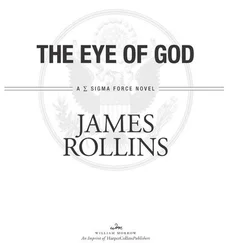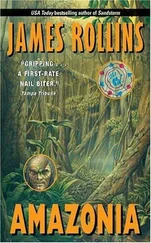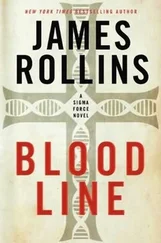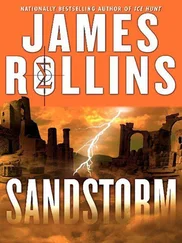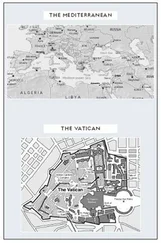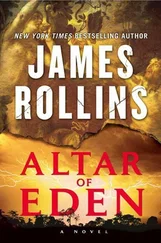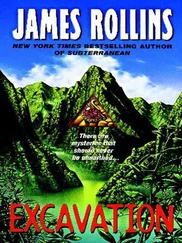He knew it probably wasn’t necessary, and the press of time weighed upon him, but he used the routine to settle himself. He would not fail. He must not fail.
All night long, as the Deep Fathom continued to steam toward the site where Air Force One had crashed, his crew had labored at readying the sub for the long trek: charging the main batteries, topping off the oxygen tanks, changing the filters to the carbon dioxide scrubbers, lubricating the thruster assemblies. With a fresh wax and polish, it could’ve passed for new.
But it was all necessary. Today, Jack was about to take the Nautilus on its longest trip yet.
An hour ago the Fathom had dropped anchor on the lee side of a small island, no bigger than a baseball field. It lay some twenty nautical miles from the crash site. Jack’s plan was to sneak the sub in as close as possible, then coordinate with Dr. Cortez and Karen on a plan to free her from the sea base. It would take impeccable timing.
Jack gave a thumbs-up to Robert, who lowered the acrylic dome and used a portable power drill to screw the O-rings tight. This was normally Charlie’s job, but he had been holed up in his lab all night, working with the crystal.
Robert patted the side of the sub, the usual two-thump signal that it was okay to dive. Jack nodded to the marine biologist. Robert laid a palm atop the dome, silently wishing him good luck, then dove off the sub.
Jack glanced back. His entire crew had gathered along the stern rail. Even Elvis stood by Lisa’s side, the old dog’s tail slowly wagging.
He saluted them all, then hit a button, sucking ballast water into the empty tanks on either side. The submersible slowly sank. As the waterline rose over the dome, he felt a twinge of misgiving. He dismissed it as the usual predive jitters, but in his heart he knew that this time it was more.
In six hours the mother of all solar storms was going to strike the Earth — and if he and the others failed, it wouldn’t matter if Karen were rescued or not.
Jack let the sub sink under its own weight. He could have descended faster under thruster power, but he had to reserve his batteries. Around him the water turned a midnight-blue as he aimed for the fifty meter mark. Once there, he gave the thrusters the tiniest juice to push the Nautilus into a gentle glide, aiming away from the tiny island and out into open sea.
Slowly, the sub sank into twilight… one hundred meters …then full night…150.
Jack kept the ship’s xenon lamps switched off, preserving the batteries, guiding himself through the black waters with the computer alone. The region had been mapped by sonar when the Fathom first arrived and the information loaded into the sub’s navigation. He would switch to active sonar once he was near the bottom. He had also ordered radio silence between himself and the ship, maintaining as much stealth as possible.
Two hundred meters …small pinpoints of light began to appear. Bioluminescent plankton and other tiny multicelled bits of life.
Jack enjoyed the display. Even here, life found a way to survive. The sight gave him a flicker of hope.
Four hundred meters . He finally switched on the sub’s sonar for the final approach to the seabed. Where he was headed, it was too dangerous to fly blind. He watched both the analog depth meter and the sonar readings. With the deftest touches he manipulated the foot pedals to make tiny course corrections.
He watched the numbers climb. Five hundred meters . Finally, he thumbed the switch, and twin spears of light shot forward, penetrating the gloom, illuminating the landscape below.
Jack pushed a pedal and tilted the sub on its side, surveying the terrain below him. It was as perfect as he had hoped, the seabed maze of deep canyons. The section of broken landscape beneath him led all the way to the crash site. The plan was for him to use the sheltering cover to mask his approach, similar to the way he had used the sunken ruins to sneak up on David’s cutter. However, this time he hoped the end result would improve. Before, he had come back empty-handed.
As the depth gauge approached the six hundred meter mark, Jack angled the sub into a wide canyon between two ridges. He slowed his speed, balancing out his ballast to neutral buoyancy.
Ready, he engaged the thrusters and began the long winding journey.
The walls to either side were covered with clams and mussels, anemones and deep-sea coral. Lobsters and crabs worked around the boulders, waving and clacking claws at the stranger in their midst. Other life fled from his lights: schools of silver-bellied fish darted in unison and vanished in a blink, bloodred octopi swept away in panicked clouds of murky ink, and winged black skates shuffled deeper into the silt.
Momentarily awed by the marine life around him, Jack continued gliding along the canyon. Over the next hour, using his sonar and compass, he navigated the maze as best he could, wending a zigzag path.
Circling around a seamount, he dove into a long narrow canyon. It was perfect. Side channels and offshoots branched away, but ahead was a straight shot to his target.
He checked his watch. Four hours till noon . He was cutting it close. Gunning the thrusters, he shot into the channel. It was this sudden burst of speed that saved his life as the rock wall to his right suddenly exploded.
Caught from behind, the sub’s stern catapulted upward, flipping the Nautilus end over end and slamming it into the far cliff.
Jack gasped, his head cracking against the dome. The Nautilus scraped down the rockface, rolling. A sickening metallic scrunch sounded as something tore away from the sub’s undercarriage. One of the xenon lamps burst with an audible pop, casting shards of thick glass.
He fought to keep his seat, praying for the inner shell of titanium and bulletproof acrylic to maintain its integrity. Even a single seam rupture at these depths would implode the sub in a nanosecond, crushing the life from him.
Working the foot pedals, he righted the sub. His visibility was zero as he hovered in a cloud of silt and sand. Through his hydrophones, a hollow tumble of rock sounded behind him. Looking over his shoulder, he could just make out a collapsed wall of boulders.
He craned his neck up. Beyond the top of the seamounts the silt cloud was clearing as swifter currents swept it away.
Overhead, he spotted his attacker.
Another sub circled like a shark. Cigar-shaped with stubby wings, it prowled along, hunting. He knew this vessel.
The Perseus —the Navy’s newest submersible, as deadly as she was sleek. The admiral had shown him the specs on the night of the sabotage. She was twice the vessel the Nautilus was: quicker, able to dive deeper, more maneuverable. But worst of all — she had teeth.
Jack spotted the dorsal fin of this titanium Great White.
A stacked array of minitorpedoes.
With a twitch, Jack flicked off the remaining lamp of his sub. Darkness collapsed over him. Through the murk above, a weak beam of light sought him out, circling and circling overhead.
The hungry predator hunted its trapped prey.
8:02 A.M., Deep Fathom
Charlie paced the small confines of his lab, mumbling to himself. “The idea could work….” He had run the calculations over and over again, and tested the crystal several more times.
Still, he remained unconvinced. Theory was one thing. Before he was ready to commit to his plan, he wanted to consult with Dr. Cortez at the sea base. But time was running out, and Charlie had no way of checking in with the geophysicist. They were dependent on the sea base calling there.
Leaning back over the computer, he tapped a button, and a three-dimensional globe of the Earth appeared on the monitor. A hundred small X’s orbited the planet. They moved slowly in a complex ballet. Off to the left a radiating wavefront of tiny lines edged minutely toward the center of the screen, toward Earth. It marked the front edge of the solar storm blowing their way. Charlie checked the upper right-hand corner, where a little clock was counting down the time until collision with the upper atmosphere.
Читать дальше


